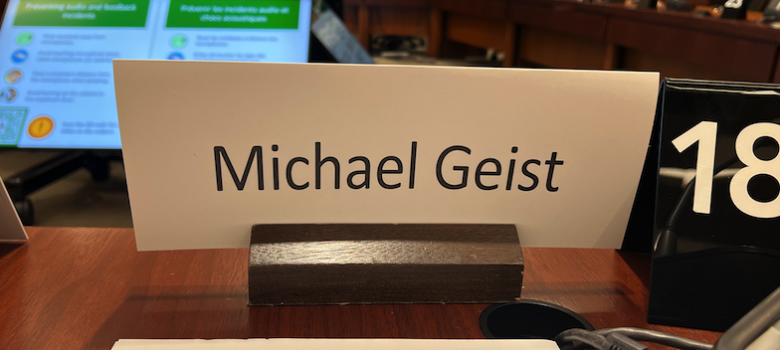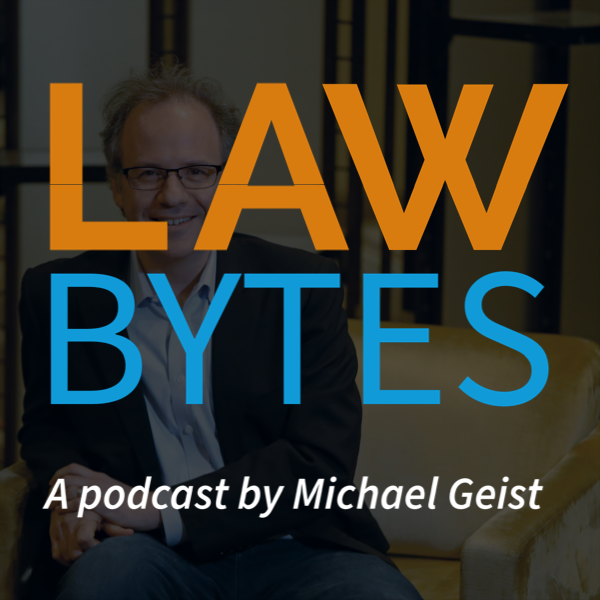The government, led by AI Minister Evan Solomon, is currently conducting a short consultation on AI regulation that has attracted criticism for its short time frame. At the same time however, the Standing Committee on Canadian Heritage has been working through a study on AI and the creative sector that may be more limited in scope, but has featured a broader range of perspectives. I had the opportunity to appear before the committee yesterday where I lamented that too often debates on new technology is framed “as a threat, emphasizes cross-industry subsidies, and misses the opportunities new technology presents. We therefore need risk analysis that rejects entrenching the status quo and instead assesses the risks of both the technology and the policy response. I’ll post the full discussion (which ventured into AI transparency, copyright, the news sector, and much more) in a future Law Bytes podcast episode. In the meantime, my opening statement is embedded and posted below.
Appearance before the House of Common Standing Committee on Canadian Heritage, October 29, 2025
Good afternoon. My name is Michael Geist. I’m a law professor at the University of Ottawa where I hold the Canada Research Chair in Internet and E-commerce Law. I appear in a personal capacity representing only my own views.
Thank you for the invitation to appear on this important study on AI and the creative industries. As some of you may know, I have appeared many times before this committee on questions involving technology and culture, including studies on copyright, freedom of expression, and Internet regulation. In each instance, much of the discussion amounted to risk analysis. There is a perceived risk arising out of new technologies, whether digital copyright, online platforms, streamers, or digital advertising, and concerns about the risks associated with proposed legislative responses, such as anti-circumvention rules, regulating user content, or blocking news links. Too often this debate frames new technology as a threat, emphasizes cross-industry subsidies, and misses the opportunities new technology presents. We therefore need risk analysis that rejects entrenching the status quo and instead assesses the risks of both the technology and the policy response.
The debate over AI faces a similar challenge. That helps explain why the government has shifted from AIDA – the former Bill C-27 – to warning against “over-indexing on AI regulation” and why groups that typically call for copyright reform find themselves arguing against it for the moment. These highlight the challenges of identifying AI risk and the fear that some regulatory responses could create new risks that outweigh the problems they are trying to solve.
So what are the risks that I think this committee needs to think about with respect to AI and the creative sector? Three issues that often arise in this area are freedom to create, appropriate protections, and Canadian content presence or discoverability. Each poses its own challenges.
First, with respect to freedom to create, AI is already an integral part of the creative process, used to assist with everything from writing to film to music. Given its importance, AI has real benefits and restrictions on AI use are not only unrealistic but may be harmful. The risks come from misinformation or public confusion that may arise from “AI slop” in a video context or poorly crafted AI generated news. This content should be properly identified, which would enhance the value of original, human creativity. There is a need to work with the relevant sectors – news, video, music, and AI services – to develop appropriate transparency measures to more easily distinguish between human-generated and AI generated content.
Second, copyright invariably arises when discussing appropriate protections. Yet in the context of AI, the application of copyright isn’t clear cut. The outputs of AI systems rarely rise the level of actual infringement given that the expression may be similar or inspired by another source, but it is not a direct copy of the original. The inputs – such as inclusion in large language models – is currently the subject of numerous lawsuits, but few have to date resulted in liability since those cases suggest that LLM inclusion and resulting data analysis often qualifies as fair use or fair dealing.
So what are the risks here? To paraphrase Minister Solomon, “over-indexing on AI regulation” in a Canadian copyright context risks creating barriers that would render us an uncompetitive market, undermining both innovation and creators. If Canada makes it more difficult or costly to develop large language models, AI development will shift outside the country. It is therefore essential that our copyright legal frameworks be globally competitive. That’s why we need copyright laws that continue to strike a balance through effective fair dealing rules and given the use of text and data mining exceptions elsewhere, including in the EU, the appropriate exceptions that position Canada as receptive to AI opportunities.
Third, we want to ensure that AI services feature relevant Canadian results, but conventional Canadian content presence or discoverability policies such as minimum content requirements or promotional presence efforts simply do not map onto AI. Indeed, those kinds of policies could backfire, leading to the exclusion of Canadian content in large language models which would in turn result in reduced presence in AI outputs. Essentially, this would be a replay of what we’ve seen with news on social media, where there are less conventional news sources and more presence of substitutable alternatives. In other words, the answer to Canadian AI cultural relevance is more Canada in the training data. That doesn’t come from more regulation, legal barriers, or higher costs. Rather, it requires transparency on data sets, reducing costly barriers to access, and the development of public AI systems that encourage the use and availability of Canadian content.
I look forward to your questions.










Find out how this single mom was able to earn $6k/monthly for working at her home for a few hours a day and how you can do it yourself .. Read More
TAB in my name
This is a very important discussion. It’s refreshing to see the focus on both the opportunities and risks of AI rather than just framing it as a threat. Balanced analysis like this is exactly what’s needed for effective policy development.
The 7win9 game is specifically designed for the regions of Pakistan so that people can easily understand the game scheme to benefit themselves.
In fact, ragdoll hit is a game that many people are interested in because of its easy gameplay and attracts many people to explore the levels in the game.
Thanks for sharing, Michael! Your appearance before the committee sounds really insightful. I particularly appreciate your point that tech debates often frame new technology as a threat, missing opportunities. It’s crucial we have risk analysis that assesses both the technology and the policy response, not just the status quo.
Thought provoking perspective, ensuring that Canadian voices and cultural works are properly represented in AI training data is an important part of building balanced and ethical systems. It’s encouraging to see discussions that focus not only on innovation but also on fairness and inclusion in the creative sector
Pingback: Canada's AI Training Dilemma: Licensing vs. Loopholes